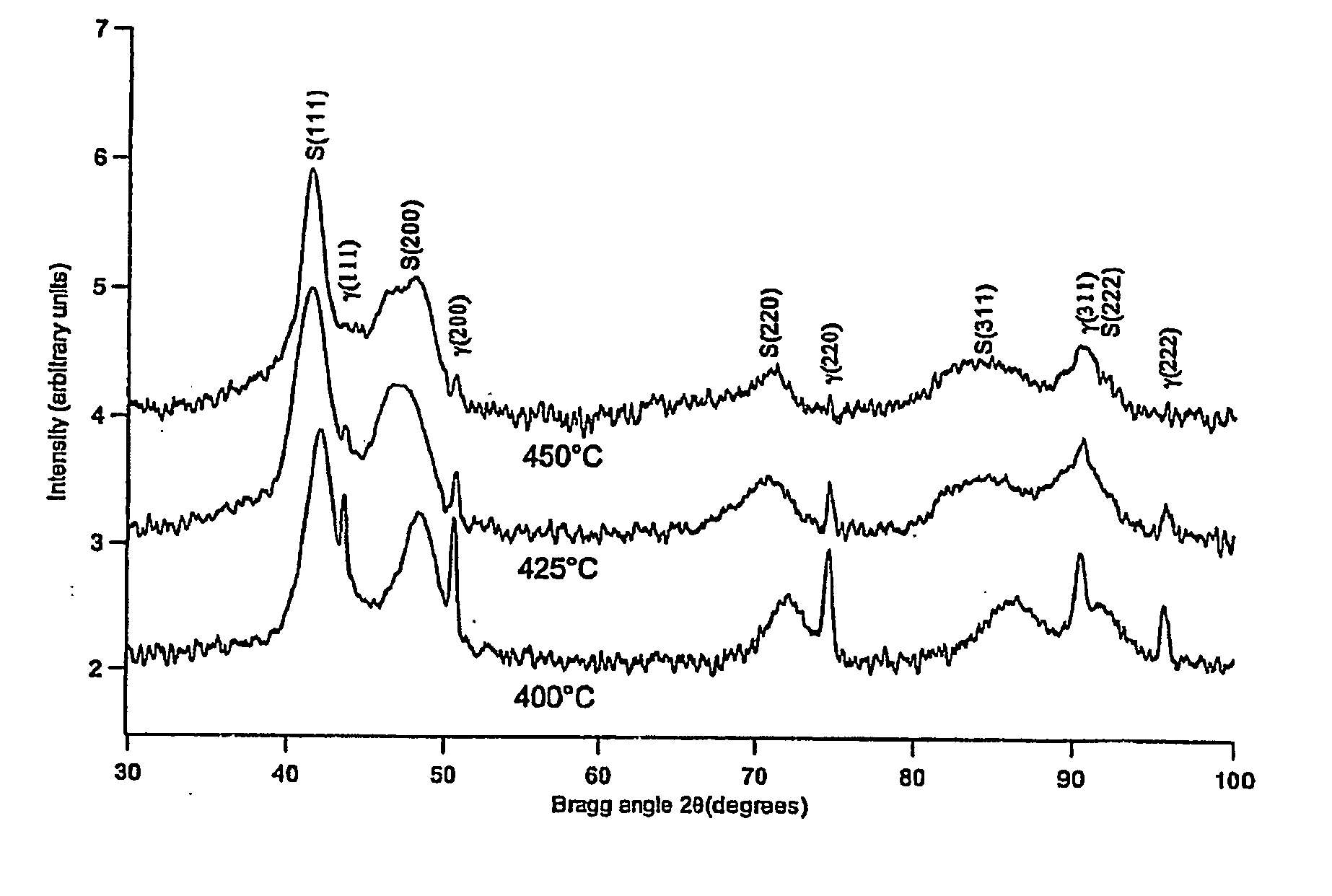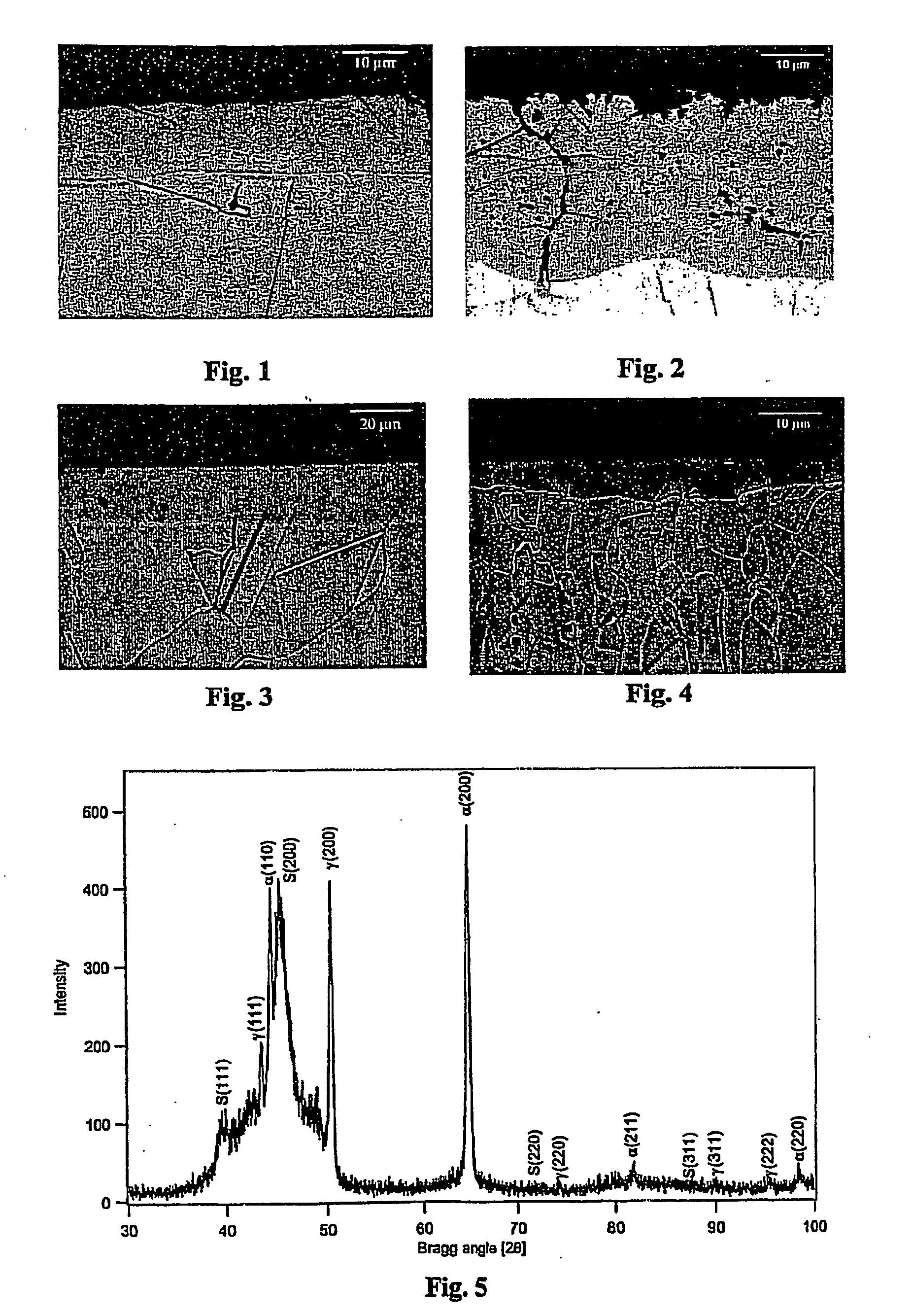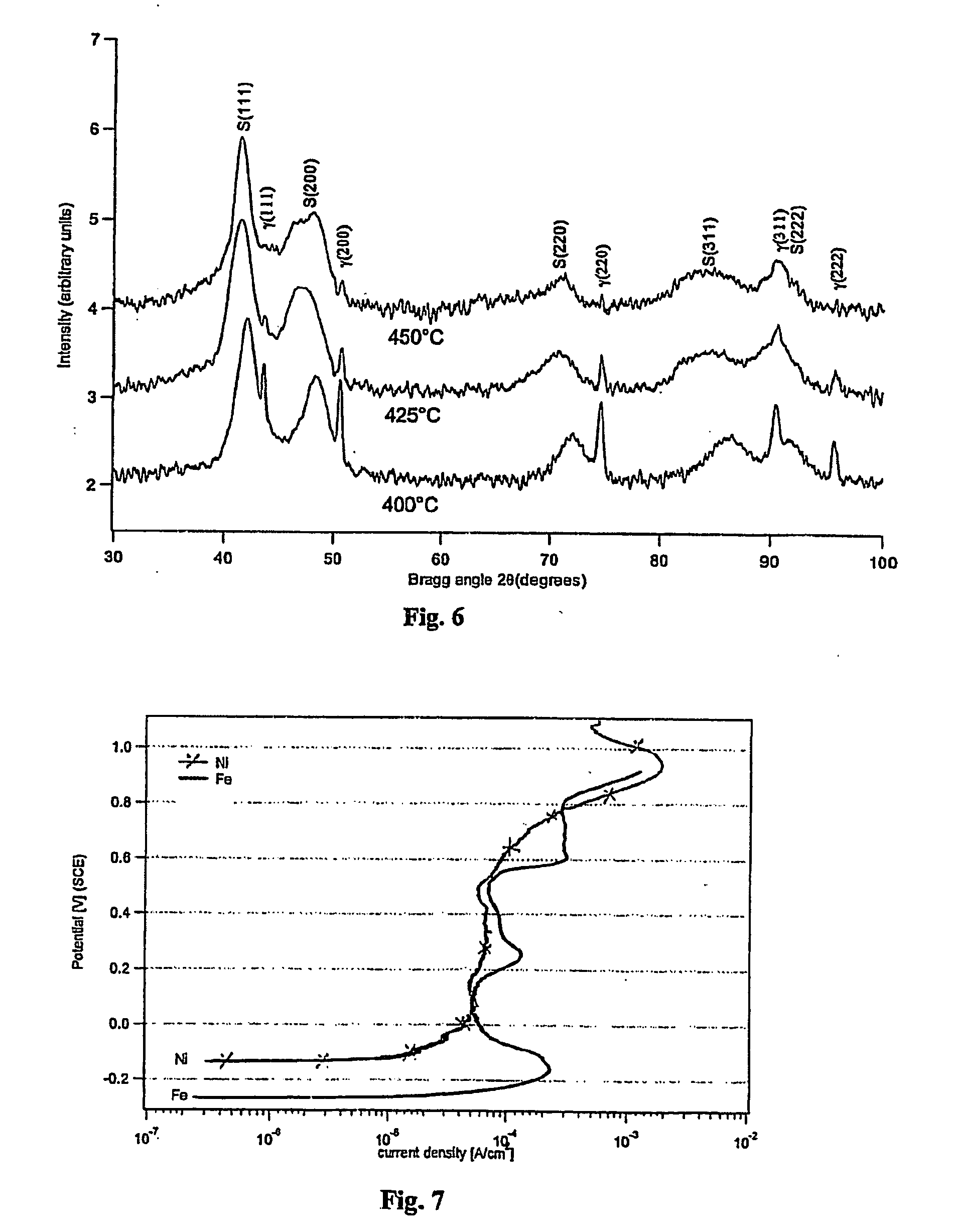Case-hardening of stainless steel
a technology of stainless steel and hardening, applied in the direction of nanotechnology, coating, nanotechnology, etc., can solve the problems of reducing the free chromium content of the material, and affecting the corrosion performan
- Summary
- Abstract
- Description
- Claims
- Application Information
AI Technical Summary
Benefits of technology
Problems solved by technology
Method used
Image
Examples
example 1
Nitriding in Pure NH3 Gas, Austenitic Stainless Steel AISI 304
[0032] An article of austenitic stainless steel AISI 304 was nitrided in pure NH3 gas (maximum nitriding potential) for 17 hours and 30 minutes at 429° C. Heating to nitriding temperature was carried out in a hydrogen atmosphere (H2), whereafter the supply of the hydrogen gas was switched off, and the nitriding gas was supplied. Cooling to room temperature was carried out in argon gas (Ar) in less than 10 minutes. The article was analysed by optical microscopy and electron probe micro-analysis (EPMA). The formed layer was nitrogen S-phase and bad a layer thickness not exceeding 9 μm. The maximum concentration of nitrogen in the S-phase was more than 20 atom %. The analysis disclosed that no nitrides had precipitated.
example 2
Nitriding in Pure NH3 Gas, Austenitic Stainless Steel AISI 316, FIGS. 1 and 2
[0033] An article of austenitic stainless AISI 316 was treated as described in Example 1, but at a temperature of 449° C. for 20 hours. The article was analysed by light optical microscopy (LOM), X-ray diffraction analysis (XRD) and micro-hardness measurements. The LOM results are shown in FIG. 1. The formed layer consisted of nitrogen S-phase and had a layer thickness of 12 μm. The micro-hardness was more than 1500 HV (load 100 g). The untreated stainless steel had a hardness between 200 and 300 HV. No nitrides had precipitated.
[0034] An austenitic steel article, heated in ammonia to 480° C. and kept for 21 hours at this temperature, showed the development of chromium nitride CrN (and ferrite) close to the surface as well as locally in the S-phase layer (the dark regions in FIG. 2). This result indicates that a high temperature of 480° C. should be avoided to obtain a monophase S-phase layer.
example 3
Carburizing in Pure CO Gas, Austenitic Stainless Steel AISI 316, FIG. 3
[0035] An article of austenitic stainless AISI 316 was carburized in pure CO gas for 6 hours at 507° C. to form the carbon S-phase. Heating was carried out in a hydrogen atmosphere (H2), until the carburization temperature was obtained, and whereafter the supply of hydrogen was switched off and the CO gas was supplied. Cooling to room temperature was carried out in argon gas (Ar) in less than 10 minutes. The article was analysed by optical microscopy, X-ray diffraction analysis and micro-hardness measurements. The LOM results are shown in FIG. 3. The formed layer was carbon S-phase having a layer thickness of 20 μm (see FIG. 3). The micro-hardness of the surface was more than 1000 HV (load 100 g). No carbides had precipitated.
PUM
| Property | Measurement | Unit |
|---|---|---|
| thickness | aaaaa | aaaaa |
| temperature | aaaaa | aaaaa |
| temperature | aaaaa | aaaaa |
Abstract
Description
Claims
Application Information
 Login to View More
Login to View More - R&D
- Intellectual Property
- Life Sciences
- Materials
- Tech Scout
- Unparalleled Data Quality
- Higher Quality Content
- 60% Fewer Hallucinations
Browse by: Latest US Patents, China's latest patents, Technical Efficacy Thesaurus, Application Domain, Technology Topic, Popular Technical Reports.
© 2025 PatSnap. All rights reserved.Legal|Privacy policy|Modern Slavery Act Transparency Statement|Sitemap|About US| Contact US: help@patsnap.com



